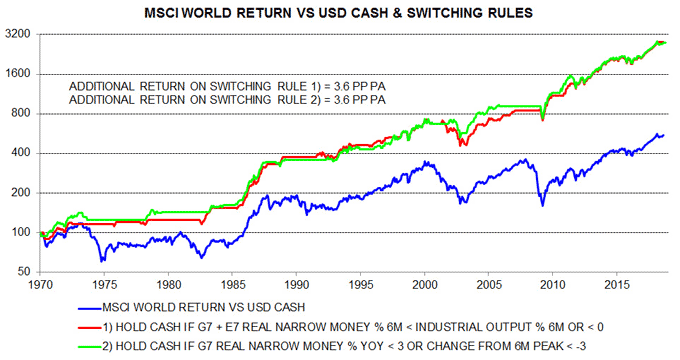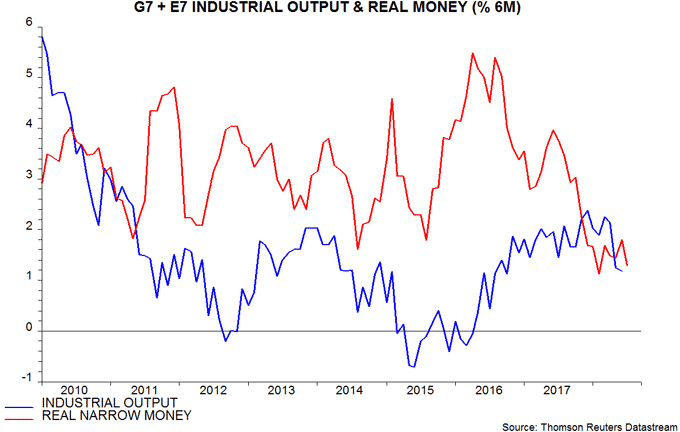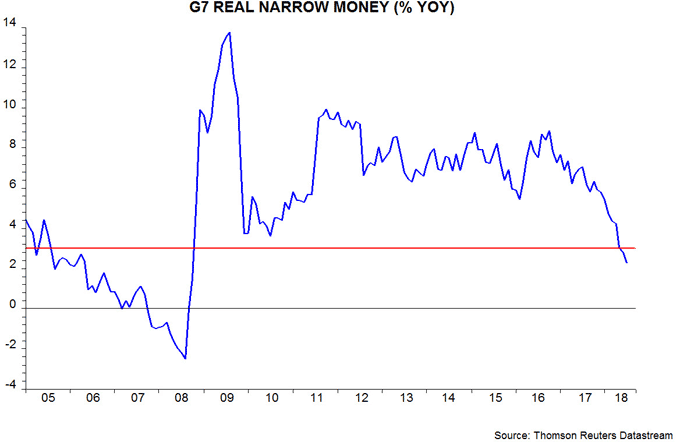
Janus Henderson: Switching between global equities and US dollar cash
Various posts in recent years discussed two rules for switching between global equities and US dollar cash based on monetary signals. One or other of the rules has recommended cash since end-January, suggesting that a cautious investment strategy remains warranted.
31.08.2018 | 12:10 Uhr
Various posts in recent years discussed two rules for switching between global equities and US dollar cash based on monetary signals. One or other of the rules has recommended cash since end-January, suggesting that a cautious investment strategy remains warranted.
The simple idea underlying the rules is that “high” (to be defined) global money growth is likely to be associated with rising demand for equities and other financial assets, with corresponding upward pressure on prices. Conversely, low or falling money growth may signal selling and downward pressure.
The first rule generates positive or negative signals by comparing six-month rates of change of real narrow money and industrial output*. A positive differential suggests that money holdings are rising faster than needed to support economic expansion, implying a surplus to be invested in markets.
This rule uses G7 plus E7 data from 2000 and G7-only for earlier years. The switch-over date reflects a judgement that E7 monetary trends were of limited significance for global markets before the 2000s.
The second rule recommends equities unless G7 annual real narrow money growth falls below 3% – its average from 1970 until the 2008-09 recession / crisis – or falls by 3 percentage points within six months. The latter condition was added in light of experience in 1987, when real money growth was falling fast but crossed below 3% only after the October crash.
Since the formulation of the rules was informed by historical evidence, their backtested performance is impressive by construction – see first chart. The additional return that would have been generated by following the rules over the last 48 years is identical, although their signals disagreed in 23% of months.

Both rules recommended equities between end-August 2011 and end-January 2018.
Six-month growth of G7 plus E7 real narrow money moved below that of industrial output in November / December 2017 – second chart. Allowing for the reporting lag, this resulted in the first rule switching into cash at end-January.

The second rule, however, remained in equities, since G7 annual real money growth was still at 5.8% in December 2017 and had fallen by only 1.2 percentage points from six months earlier – third chart.

The two rules have now reversed their recommendations. G7 annual real money growth crossed beneath the 3% threshold in May / June and is likely to have fallen further in July, based on US / Japanese monetary data. The July reading may also be down more than 3 percentage points from six months earlier. The second rule, therefore, switched to cash at end-July.
By contrast, the global economic slowdown and a stabilisation of monetary trends since early 2018 resulted in the gap between six-month growth of G7 plus E7 real narrow money and industrial output turning positive in May / June, causing the first rule to switch back into equities at end-July.
As noted in yesterday’s post, G7 plus E7 six-month real narrow money growth appears to have fallen in July, so this positive signal could prove short-lived. Using G7-only data, the growth gap has remained negative.
The historical backtest results, unsurprisingly, were most impressive when the two rules agreed. Dual positive signals were associated with an average excess return on equities relative to cash of 16.3% per annum (pa); equities underperformed cash by 10.3% pa on average when both rules were negative. Mixed signals, as currently, were associated with an average excess return of 1.6% pa. Even if unneeded, the opportunity cost of a defensive strategy may prove modest.
*A positive signal also requires the six-month change in real narrow money to be above zero.




Diesen Beitrag teilen: